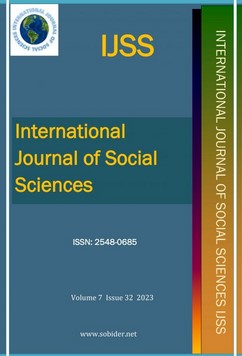Mütedeyyin Kentli Kimliğinin Mekansal İzdüşümü: Kızılcık Şerbeti Dizisi Örneği
Spatial Projection of the Devout Urban Identity: The Example of the Cranberry Sherbet TV Series
Author(s): Araştırma Görevlisi ŞEYMA AYYILDIZSubject(s): Gender Studies, Media studies, Rural and urban sociology, Sociology of Culture, Psychology of Religion
Published by: SD Yayınevi
Keywords: Place; gender; culture; media;
Summary/Abstract: Television, the most effective mass media, is expanding its influence with TV series. In recent years, Kızılcık Şerbeti, which has been shown as the most influential of these TV series in the Turkish public, has produced many questions and also opened the door for sociologist to search for answers to seemingly contradictory concepts such as modernity, tradition, religiosity and conservatism. The main research question of this study is based on how the religious identity produces a sense of place and the daily life practices that are the reflection of the space. Urban space, which is the place of interactions, differences and transformation, is at the center of the research question. To answer this question thematic analysis was used as a qualitatvive research method. All episodes of the series, which started broadcasting in 2022, have been watched so far. The findings were discussed under the titles of "private space-public space: sense of multiple spatiality", "gender and space relationship", "the meaning of social capital in the construction of the sense of space and consumption relations". Cultural codes, gender, class differences, social ties, intergenerational differences produce multiple sense of place instead of the same sense of place, but there are differences in terms of the representation of religious men and women. Women are given the responsibility of carrying, reflecting and protecting religious symbols and lifestyle, and they are expected to be responsible for patriarchal codes. In this sense, urban space becomes an area where inequalities are maintained and reproduced.
Journal: Uluslararası Sosyal Bilimler Dergisi
- Issue Year: 7/2023
- Issue No: 31
- Page Range: 132-159
- Page Count: 28
- Language: Turkish

